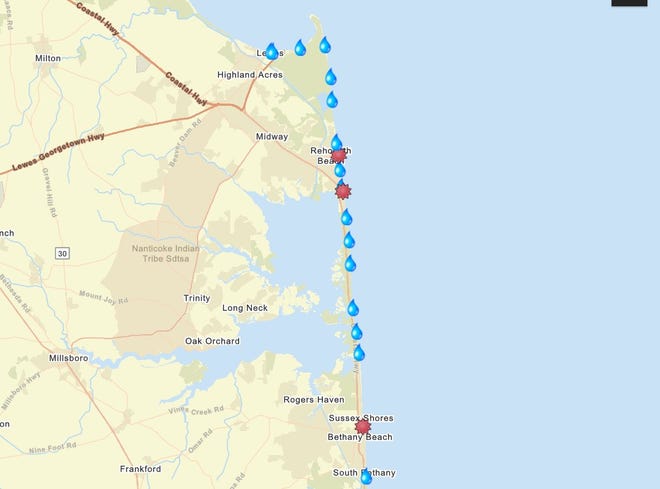The state Department of Natural Resources and Environmental Control is advising beachgoers to use caution and avoid prolonged periods in the water on Friday after test samples came back with elevated levels of bacteria at three different Delaware beaches.
After routinely testing the water at public beaches, the department issued a recreational water advisory late in the day on Thursday. The areas affected include Rehoboth Beach from Baltimore Avenue to Stockley Street, Dewey Beach from Dagsworthy Street to Collins Avenue, and Bethany Beach at Garfield Parkway.
These beaches remain open to visitors, all three towns confirmed in separate press releases Thursday night.
The advisory is expected to last through Friday afternoon, according to Rehoboth Beach spokesperson Lynne Coan. After DNREC takes daily samples, the advisory may be updated or lifted.
The elevated bacteria levels are likely due to wildlife feeding near the surf, according to DNREC.
PREVIOUS ADVISORY:Water advisory at Rehoboth Beach lifted Friday
Those little reddish-orange creatures called “sea angels” or “sea butterflies” that people have been noticing along the beach? DNREC says those, as well as high concentrations of baitfish, create more potential food sources that can increase the likelihood of wildlife coming closer into the surf zone.
The department has also previously said that increased rainfall and waves near the shoreline can add to more bacteria in swimming areas.
SEA BUTTERFLY:Naked sea butterfly are washing up on Eastern Shore beaches. What is it?
This is the second water advisory that DNREC has issued recently due to elevated bacteria levels in Rehoboth Beach. The last advisory happened on July 28 when the department noted increased levels of an indicator bacteria known as Enterococci.

This bacteria, which live in the intestinal tracts of warm-blooded animals, according to the U.S. Environmental Protection Agency, “are indicators of the presence of fecal material in water.”
Enterococci themselves are not typically harmful to humans, but they can indicate other bacteria, viruses and protozoa that cause diseases are also present in the water, according to the EPA.
Reporter Shannon Marvel McNaught contributed to this report.
Emily Lytle covers Sussex County from the inland towns to the beaches, with a focus on health-related issues. Got a story she should tell? Contact her at elytle@delmarvanow.com or 302-332-0370. Follow her on Twitter at @emily3lytle.